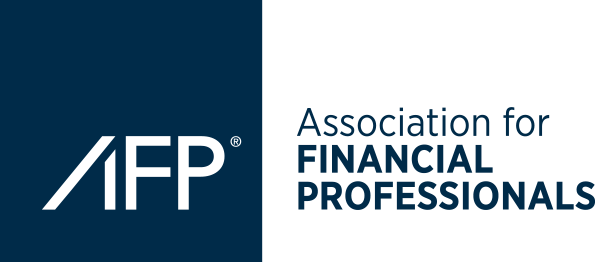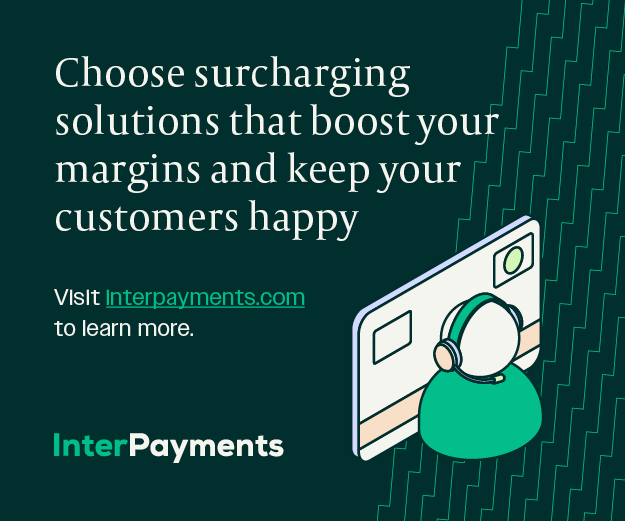Partner Content

Shifting Perspectives on Surcharging
In today’s increasingly digital and cashless economy, surcharging has emerged as a strategic approach for businesses seeking to recover the cost of credit card acceptance. As credit card usage rises and transaction fees grow, surcharging offers a viable way to maintain profitability while offering customers the convenience they’ve grown accustomed to.
Still, deciding whether to implement surcharging is not a simple choice—and rightly so. A surcharging program must adhere to strict, rapidly evolving legal requirements and, if introduced poorly, could strain customer relationships. But with modern payment technology that treats surcharging as a full business program rather than a simple feature, companies don’t have to fear the worst-case scenarios. Today’s tools have turned surcharging into a bottom-line opportunity, not a liability.
According to a 2023 J.D. Power survey, one-third of small businesses now apply credit card surcharges, signaling growing acceptance and recognition of the value surcharging can bring. As this momentum builds, it’s time to cut through the noise and reframe surcharging not just as a cost-control measure, but as a thoughtful business tool that, when done thoughtfully, can have low compliance risk and strengthen customer relationships.
Understanding the Stories Behind the Solution
As with any business decision, surcharging invites discussion, but much of the dialogue is based on outdated misconceptions rather than facts. Some merchants fear the act of adding a surcharge could alienate customers or deflate sales, but research indicates that cardholder frustration stems from hidden or unexpected charges—not the surcharge itself.
This disconnect between perception and reality has fueled lingering skepticism—but the data tells a different story. Let’s take a closer look at some predominant myths skewing the story behind the solution:
- “Surcharging is illegal.” Credit card surcharging is legal in some form in almost all U.S. states. Only debit card surcharging remains prohibited.
- “Customers will contest the additional fee.” Consumer behavior shows otherwise: 85% accept and pay surcharges without protest, according to a PYMNTS study.
- “Surcharging is only for retailers and B2C merchants.” Surcharging is widely used across B2B industries, often with fewer roadblocks than B2C environments.
- “Surcharging adds more complexity than it does value.” Surcharging can be complicated––but it doesn’t have to be. The right platform streamlines implementation, automates compliance, and maximizes impact.
Ultimately, the question for merchants shouldn’t be whether to surcharge, but how. Through effective, transparent implementation, fee recovery supports both business goals and healthy customer relationships.
Surcharging is a Program, not a Fee
Customer-centric surcharging, grounded in transparency and integrity, delivers value for merchants and customers alike. In complex B2B environments, surcharging programs enable merchants to improve cash flow while also empowering customers with increased flexibility and choice. A complete surcharging program accomplishes revenue recovery while proactively managing compliance risk and fostering customer trust and communication. These goals are tightly interconnected and necessitate a comprehensive program.
To ensure revenue recovery, an effective surcharging program touches all corners of the finance and business operation. Leadership must define the why, who, how, and where of surcharging to ensure both margin protection and customer fairness.
A successful execution involves:
- Collaboration across sales, credit, collections, legal, and accounting to set policy, update documentation, and train teams on new requirements.
- Documenting decisions, such as surcharge rates, exemptions, and communication protocols, in alignment with accounting standards and regulatory demands.
- Continuous monitoring and adjustment to account for fast-evolving, region-specific regulations, changing payment habits, and organizational needs.
With this foundation in place, communication becomes the key to achieving customer adoption. The goal? Reframe the conversation to focus on shared value and mutual respect:
- Present surcharging as a standard, compliant practice designed to manage increasing transaction fees.
- Explain how it contributes to maintaining fair pricing, allowing businesses to keep base prices stable for customers not using credit cards.
- Provide early notifications with ample lead time prior to implementing the practice.
- Offer choice by highlighting alternative payment methods.
- Frame the practice as a shared effort, supporting sustainability and long-term value.
Regardless of whether a customer pays the surcharge or avoids the fee with an alternative payment method, merchants have an opportunity to emphasize customer choice and alleviate the fear of deterring valuable sales by clearly explaining their surcharging policies.
Recovering Costs with Confidence and Clarity
With over 80% of shoppers now favoring cashless payment, credit cards are an essential part of B2C and B2B commerce today. Yet, the fees tied to each transaction can add up quickly. Without surcharging, merchants are often left searching for other ways to offset swipe fees, such as raising prices on goods or services that affect all customers, not just those who choose to pay with credit.
That’s where the right surcharging program can offer a better path forward. With greater control and customization, surcharging enables merchants to apply fees selectively, tailoring deployment for specific customer segments and business units. Unlike flat service or convenience fees, which blanket all customer groups, surcharging offers a more precise and equitable approach to cost recovery.
At its core, surcharging is about creating transparency around how businesses handle the rising cost of card acceptance. When implemented with rigorous compliance and open customer dialogue, it lets merchants protect margins and safeguard profitability without raising prices for everyone.
With that in mind, it’s essential for financial professionals and business leaders to approach surcharging as a goal-oriented enterprise program, not just an added step to a transaction. Like any customer-facing program or service, surcharging carries reputational implications. Choosing the right solution means aligning with partners who prioritize transparency, compliance, and customer satisfaction as well as cost recovery.
With InterPayments, an independent Managed Surcharge Provider, merchants can confidently and compliantly recover transaction costs without disrupting the customer experience. InterPayments delivers compliance indemnification, tailored surcharging programs, and expert guidance, removing the stress of implementation and giving merchants full control over how and where their surcharging program is applied.
Connect with one of our surcharging experts to learn how InterPayments can help boost your margins and customer satisfaction: https://www.interpayments.com/contact-us/

